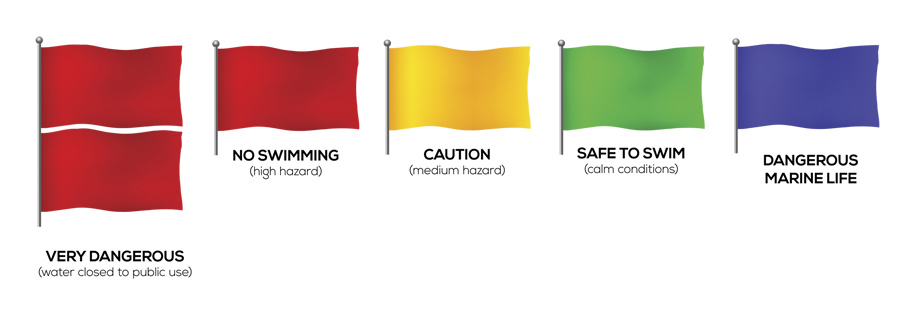
Weather
Panama City Beach, Florida is a subtropical coastal city with temperatures that vary from summer to winter. Highs range from the 90s in the Summer to the 60s in the Winter. December and January are typically the coldest with July and August being the hottest and also the wettest. Powerful thunderstorms are common in these months but often occur in the afternoons. Weather during Spring Break can range from warm to cool with highs in the 70s and lows in the 50s.
AVERAGE HIGH AND LOW TEMPERATURE IN PANAMA CITY BEACH
January 63°/45° February 66°/48° March 72°/54° April 77°/59°
May 84°/68° June 89°/74° July 90°/76° August 90°/75°
September 88°/72° October 81°/63° November 73°/ 4° December 65°/47°
HURRICANES
Hurricane season runs from June 1st to November 30th but it is possible for the storms to occur outside of these dates. These storms can have dramatic impacts on coastal areas.
UV INDEX
The UV index is higher in the summer months but it is possible to get a sun burn at any time of the year. The ultraviolet radiation is also still present when the skies are cloudy or overcast so be sure to always use appropriate sun protection and to limit your exposure at the peak hours between 11 in the morning and 2 in the afternoon.
TIDES
Typically tides in and around Panama City Beach occur once a day with a single high and low tide that ranges from one to two feet. There can occasionally be two tides in a day or tidal changes outside those ranges.
SURF
The surf at Panama City Beach is generally mild but can build to impressive heights in the right conditions. Larger breaks occur on the sandy beaches when wind patterns cause them to build. Waves are typically larger in the winter months and when storms, espescially tropical systems are present in the Gulf.
OCEAN TEMPS
Water temperature in the Gulf of Mexico around Panama City Beach ranges from the 60s in the winter months to the 80s in the summer. Spring Break water temperatures can range from the mid 60s to the mid 70s.
LEAVE NO TRACE
The Leave No Trace ordinance (also known as Leave Only Footprints) states that all personal items will be removed and disposed of if left on the beach between the hours of 7:00 p.m. and 7:00 a.m. CST. These items include, but are not limited to: tents, chairs, toys, umbrellas and coolers.
DOLPHINS & SEA TURTLES
Dolphins are a common site from boats in the Gulf or even the beach. Some outfitters offer special dolphin watching cruises. Sea turtles also reside in our waters. They come onto the beaches to lay their eggs. If you see a sea turtle, do not disturb it, and do not expose the animal to any bright lights. Harming a sea turtle or its nest is punishable by law. To report a turtle nest or hatchlings on the beach, call Panama City Beach Police 850-233-5000.
DOG BEACH
Dogs are not allowed on Bay County beaches with the exception of a pet-friendly area located on the Westside of the Russell-Fields City Pier located across from Pier Park at 16101 Front Beach Road. Signs are posted to mark the designated area where dogs are allowed.
BEACH SAFETY
Know the Beach Warning Flags! When swimming in the Gulf, safety should always be a top priority. In Panama City Beach, color-coded beach flags are in place to keep the public aware of sea conditions at all times. Remember, double red means stay out of the water – you could be arrested or fined $500 for ignoring this warning! Stay aware, and have fun!

LIFEGUARDS
You can find lifeguards at the following three locations (7 days a week from 10 a.m. – 6 p.m.):
- M.B. Miller County Pier (May 27 – Labor Day Weekend)
- Rick Seltzer Park (May 27 – Labor Day Weekend)
- Russell Fields City Pier (April 1 – Labor Day Weekend)
*In the event of inclement weather, lifeguards may not be on duty.
SUN PROTECTION
By far the most common injury on the beach is also the most easily prevented! SUNBURN. Protect your skin. Sunlight contains two kinds of UV rays. UVA which increases the risk of skin cancer, skin aging, and other skin diseases. UVB which causes sunburn and can lead to skin cancer.
Whenever you are going to spend time outside, be sure to wear sunscreen. It is advisable to wear at least SPF 15, or higher if you have fair skin. Most sunscreens require reapplication after a few hours, especially if you are sweaty or have been in the water. Please note that even when you are under an umbrella, you are still getting sun because the rays reflect off of the sand. Even when you are using sunscreen, most experts warn to stay out of the sun between 10 a.m. and 2 p.m. when the sun’s rays are the strongest.
Wear sunglasses. They’re like sunscreen for your eyes and protect against damage that can occur from the sun. Be sure to select sunglasses with labels indicating that they absorb at least 90 percent of UV sunlight.
HYDRATION
Drink water frequently even if you don’t feel thirsty. Your body needs water to keep cool. Avoid substantial consumption drinks with alcohol or caffeine. They can make you feel good briefly but make the heat’s effects on your body worse.
RED TIDE
Though not a problem most of the year, people may experience respiratory problems such as coughing, sneezing, and tearing when red tide outbreaks occur along the coast. Offshore winds can blow these toxic effects onshore. Swimmers may experience skin irritation in areas of high concentration.


